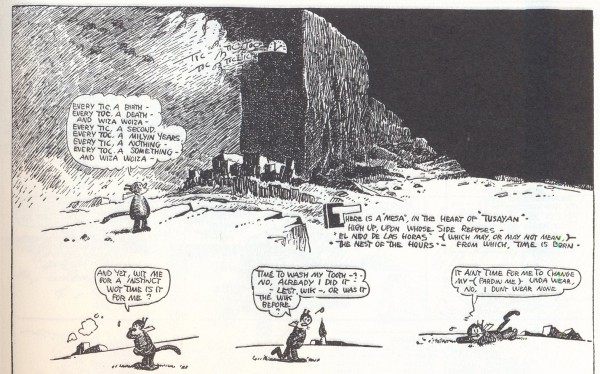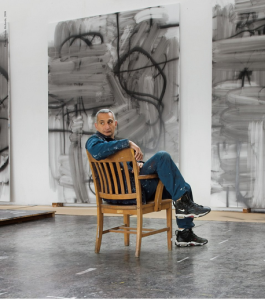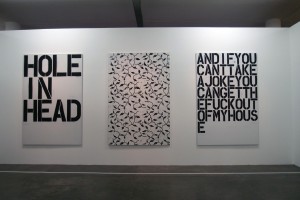THE PERENNIAL AMBIGUITY OF CHRISTOPHER WOOL
I like Christopher Wool’s artwork. Wool became famous for his paintings of strong, provocative phrases in black letters, primarily ALL CAPS. Wool’s works are of an abstract nature, sometimes intricate in presenting an idea, other times arcanely elusive. In October’s Vogue Dodie Kazanjian scored a rare interview with the media-reclusive artist. The format and presentation of the arguments the writer provides to the text more closely resembles that of an essay, but many intriguing themes come up.
By introducing Willem de Kooning’s approach to artistic work–who worked “out of doubt”–as a starting point, the writer reveals the artistic intentions of Wool to be consistent in their omnipresent questioning and doubting. They are works defined by what Kazanjian calls a “perennial ambiguity.” This ambiguity may also be viewed as the proclamation of the honest confusion of an artist. Thus, the refusal of adopting an authoritative style should not be considered the result of limited intellectual rigor, but rather should be respected for its humility.
Discussing his artistic aspirations and how he managed to become a significant part of the modern art world, Wool asserts that his path was somewhat coincidental. “It just kind of happened,” he states. A key to his success was possibly that his early years in New York coincided with a legendary era of NY nightlife and culture: CBGB and Max’s Kansas City. The intersection of nightlife and the art-reality that was being created was evident in the 1980s, and shaped the public’s perception of artists’ role.
Upon revisiting his old work, the artist himself confesses: “They were offensive, funny, and indelible–you had to pay attention.” Consequently, it is not surprising that the critical response to his work varied. Some thought it populist in its negativity, while others observed in it a radical stance: a cacophonous harmony, or a refreshing pathos. What is predictable in his work is Wool’s lack of “conclusiveness” or the absence of artistic closure.
“I firmly believe it’s not the medium that’s important, it’s what you do with it,” the artist clarifies.
Krazy Kat: Herriman, Cantor, von Heyl

from Krazy Kat, 1913-1944 by George Herriman
The sun on her carpet was swirling up into a fire of magnesium blues and sulfurous browns, a mushroom cloud of flame and smoke, with little Ignatz and his metal necktie rising serenely on top. Top o’ the World, Ma! Once more she was watching a fire storm that she had somehow caused, and it was shaking her apart! She felt like she had a snake coiling inside her, yet the snake was her, and she was inside it. The snake was made of blackness and stars. And every star in the snake was another smaller snake that was made of blackness and stars, and those stars were snakes made of blackness and stars. The snake was the beginning and end of things: death biting the tail of love, every yes that became no that became love become hate become yes again. The snake would kill her but it would give birth to her, too, over and over, if only she could keep the snake together. And the only way to do that was to get the tail of it into her own mouth, to bite the beginning and end of things and be the circle.
from Krazy Kat: a novel in five panels, 1988, by Jay Cantor

It’s Vot’s Behind Me That I Am (Krazy Kat), 2010, acrylic and oil on linen and canvas, by Charline von Heyl


